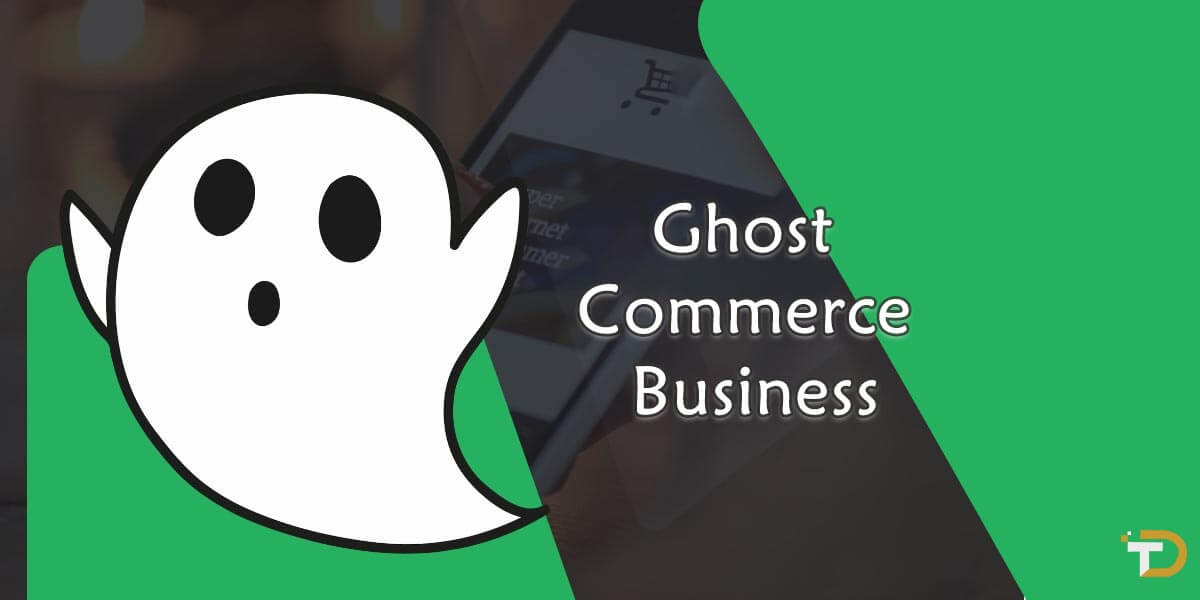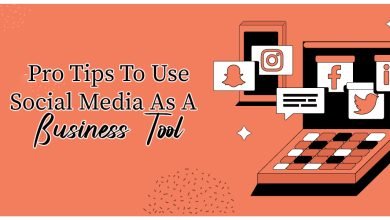Complete Guide to Successful Ghost Commerce Business
Ghost commerce is an innovative e-commerce model that is gaining popularity among online entrepreneurs. Unlike traditional e-commerce where businesses hold inventory and manage physical or digital storefronts, ghost commerce follows a different approach. In this article, we will explore the concept of ghost commerce in depth and provide valuable insights for those considering this strategy.
What is Ghost Commerce?
Ghost commerce refers to an online retail model where individuals or businesses promote and sell products without directly owning inventory or managing a traditional online store. As the name suggests, ghost commerce operators remain “invisible” and act more like ghosts that facilitate transactions in the background.
In ghost commerce, promoters leverage their online influence and direct traffic towards third-party retailers, marketplaces, or platforms where the actual purchase is made. They do not hold products in stock but earn a commission for each referral or sale generated through their recommendations and marketing efforts.
The key aspects of ghost commerce include:
No inventory: Ghost commerce promoters do not source or store any physical goods. They simply connect buyers with sellers.
Affiliate relationships: Earnings are typically made through affiliate commissions from retailers for each referral or sale.
Online presence: Success relies on developing a strong following across blogs, websites, social networks, and other online channels.
Trust and credibility: With no physical storefront, trust plays a major role. Promoters must establish themselves as knowledgeable and reliable.
Marketing focus: The primary activity involves promoting products, retailers, and driving sales through recommendations and affiliate links.
How Does Ghost Commerce Work?
Let’s understand the basic process and flow of ghost commerce:
Research and niche selection: Promoters identify popular product categories, trends, and target audiences to focus on.
Onboarding with retailers: They sign up as affiliates for various e-commerce platforms and retailers selling related products.
Website/blog setup: A website, blog or online content hub is created to engage the target audience.
Content marketing: Regular posts are published featuring products, reviews, comparisons to educate and inform readers.
Link integration: Affiliate links from partner retailers are embedded within content to track referrals.
Traffic generation: Search engine optimization (SEO), social media, email marketing etc. are leveraged to drive traffic.
Purchase referral: When readers click links and purchase products, the affiliate earns a commission from the retailer.
Data analysis: Tools are used to analyze metrics, optimize strategies, and identify high converting products/links.
This process allows ghost commerce promoters to earn passively by connecting demand and supply without owning inventory or fulfilling orders themselves.
Developing a Ghost Commerce Business

Here are the key steps to effectively set up and run a ghost commerce business:
Market Research
The first step involves thorough market and niche research. Promoters must analyze popular product types, buying behaviors, trends, pain points and determine a niche with high commercial potential and low competition using tools like Google Trends, SEMrush, etc.
Website/Blog Setup
A professional looking website or blog provides the central hub to engage the target audience. Platforms like WordPress, Ghost, Shopify, Wix etc. allow creating customizable sites without technical expertise.
Onboarding with Affiliate Networks
Promoters sign up with large affiliate networks like ShareASale, Rakuten, Impact Radius that connect them to thousands of merchant programs globally in diverse categories.
Content Marketing Strategy
An editorial calendar is created to publish high-quality, original articles, guides, reviews around the chosen niche to establish expertise. Headlines, images are optimized for social sharing.
Traffic Generation
Search engine optimization (SEO), social media marketing, email campaigns, influencer outreach, and ads help send relevant traffic to the content and affiliate links.
Analytics and Testing
Tools like Google Analytics help analyze user behavior and fine-tune content, links and campaigns. A/B split testing helps determine high performing page elements.
Community Building
Engagement is promoted through comments, polls, user-generated content to develop a loyal following and sense of community around the niche expertise.
Customer Service
While orders are fulfilled by affiliates, promoters provide support for pre and post-purchase queries to strengthen relationships and credibility.
Ongoing Optimization
As the business scales, promoters continue improving site speed, mobile optimization, security, and technical SEO to deliver the best experience for the target audience.
With the right strategy and effort, ghost commerce provides an opportunity to build a sustainable online business without large capital investments. Consistent optimization is important for long term success.
Monetization Strategies in Ghost Commerce
While affiliate marketing commissions form the core revenue stream, ghost promoters can explore other monetization strategies to boost their earnings over time:
Ad networks: Sites with good traffic can integrate Google AdSense or Mediavine ads to generate additional passive income.
Sponsored/branded content: Promoters work with merchants to create reviews or posts in exchange for monetary compensation.
Email marketing: Building an email list allows promoting exclusive deals, products through newsletters for affiliate earnings.
Courses/ebooks: Topical guides, workbooks, templates on ghost commerce basics can be sold to aspiring entrepreneurs.
Consulting/coaching: Promoters share their expertise through paid training programs, 1-1 mentorship for serious businesses.
Dropshipping: Some start reselling top affiliate products through a simple online store with no inventory.
Public speaking: Popular promoters get offers for conferences, meetups to share success stories and strategies.
Podcasts: Niche-focused podcasts develop expertise and interview influential people to grow an audience.
Diversifying income streams helps scale earnings while also providing additional value to the target audience over time.
Choosing a Ghost Commerce Niche

Selecting the right niche is crucial for success since it determines the type of products or services promoted. Some factors to consider include:
Demand: Research markets with consistent buyer interest and search volumes not prone to fads.
Competition: Analyze competitor websites and difficulty of ranking. Choose niches with less saturation for faster results.
Profit potential: Check affiliate commission percentages and margins different types of products offer. Higher payouts allow more flexible strategies.
Audience size: Narrow niches may have very specialized buyers. Broader appeal ensures adequate traffic and sales volumes.
Passion/interest: Promoters do best when topics align with their interests for creating engaging, knowledgeable content.
Seasonality: Year-round, low seasonality niches provide more predictable earning streams.
Portability: Niches with global demand allow scaling internationally and catering to different regions.
Popular options include health, fitness, technology, finance, home & garden, food, parenting etc. Starting broad and testing content helps identify the most lucrative sub-niches over time.
Read More: Guide to Crafting an Impactful Ecommerce Growth Strategy
Scaling the Ghost Commerce Business
Once initial success has been achieved, ghost commerce businesses can expand their reach and income through various scaling strategies:
Expanding Niche Expertise: Additional specialized categories allow promoting diverse products while leveraging existing readership and traffic.
Launching Multiple Sites: Separate websites or blogs catering to specific interests within the broader niche multiply monetization avenues.
Building an Email List: Regular communications through an email opt-in build direct relationships for exclusive offers and promotions.
Creating an App: A mobile application extends the brand and content for on-the-go audiences. Links and ads drive further sales.
Hosting an Online Community: Forums and groups enhance peer engagement while deepening relationships.
Producing Related Content: Videos, podcasts, and other multimedia formats reach wider audiences online and through distribution.
Selling Related Products: Carefully curated collections of best-selling affiliate products present an alternative revenue stream.
Partnering with Influencers: Collaborations with influencers in related niches expand both audiences through cross-promotions.
Securing Sponsorships: Approaching complementary merchants allows sponsored posts in exchange for payments.
Going Global: International versions of the site tailor content for new regions and their buyers. Translations expand the reach.
With sustained efforts, ghost commerce provides an opportunity to build substantial, long-term online businesses without large capital investments.
Conclusion
In conclusion, ghost commerce has emerged as a highly viable model for entrepreneurs to generate an online income by promoting other companies’ products and services. By leveraging their influence and expertise through content marketing, ghost promoters act as intermediaries to connect buyers and sellers.
With minimal upfront costs and ongoing operational simplicity compared to traditional e-commerce, ghost commerce lowers the entry barrier. While it faces challenges like reliance on third parties and competition, proper planning and optimization techniques help mitigate risks.
For new entrepreneurs or those wanting to supplement existing incomes, ghost commerce provides flexibility. With the right market research, content strategy, and scaling methods over time, it presents the opportunity to build substantial, long-term online businesses. As the model evolves further, its impact on digital commerce is set to grow in the coming years.





